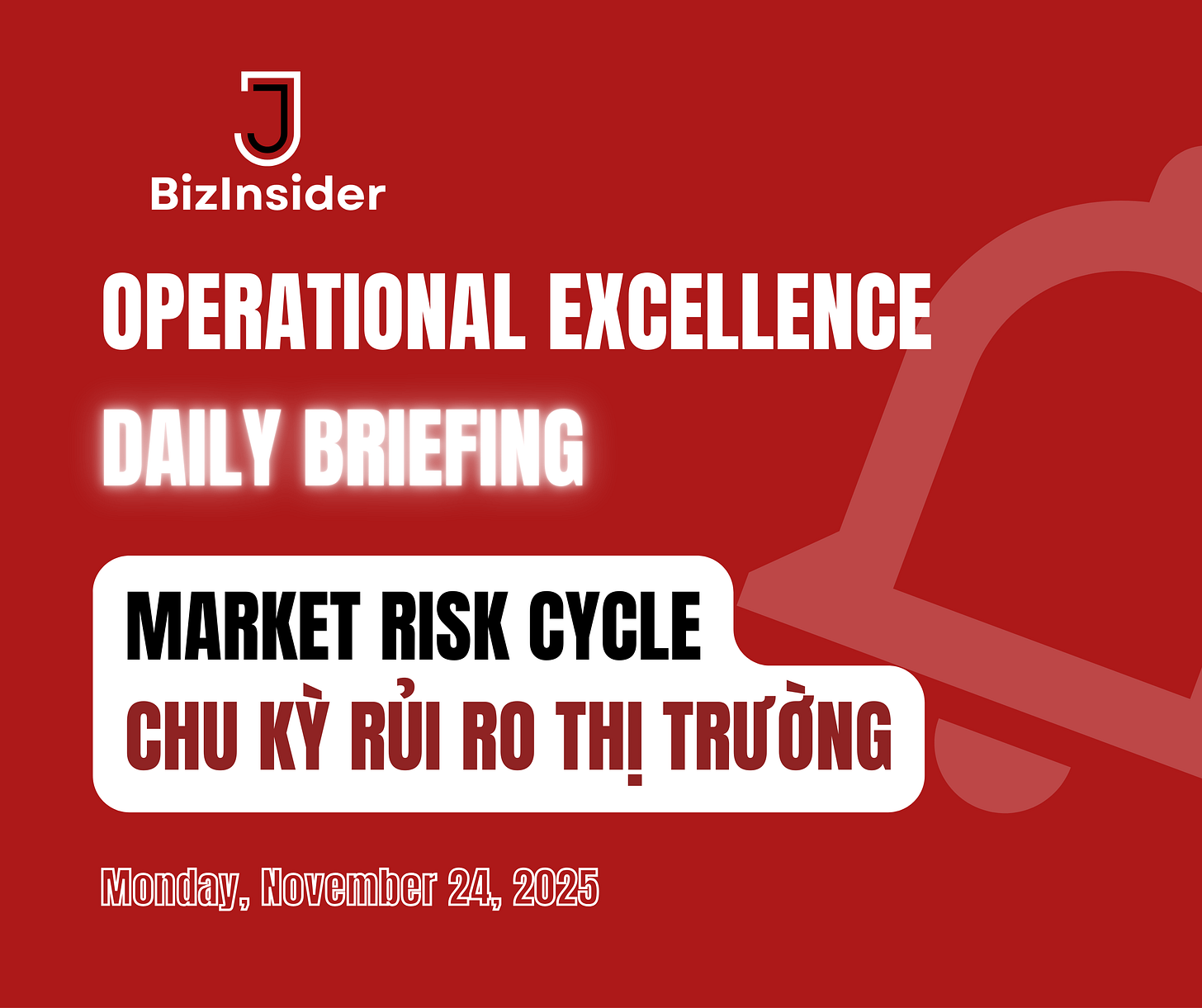Operational Excellence (OPEX) Daily Briefing – Monday, November 24, 2025: Market Risk Cycle: Decoding BofA’s (Bank of America)Warning.
Điểm Tin Operational Excellence (OPEX) Mỗi Ngày – Thứ Hai, Ngày 24/11/2025: Chu Kỳ Rủi Ro Thị Trường: Giải Mã Cảnh Báo của BofA (Bank of America).
Welcome to my unique weekday article for the paid subscriber-only edition.
Operational Excellence (OPEX) Daily Briefing – issued on weekdays (Monday to Friday).
Điểm tin Operational Excellence (OPEX) hằng ngày (phát hành các ngày thứ Hai đến thứ Sáu).
This is the bilingual post in English and Vietnamese. Vietnamese is below.
Đây là bài viết song ngữ Anh-Việt. Tiếng Việt ở bên dưới.
English
PART 1 – OFFICIAL INFORMATION
According to the Global Fund Manager Survey for November 2025 by Bank of America, cited by Reuters in the article “Investors still bullish; positioning is headwind for markets – BofA survey” dated November 18, 2025, global fund managers have significantly increased their allocation to equities and commodities, while the amount of cash they hold has dropped to only 3.7%. This is a level that Bank of America considers a “sell signal,” because cash levels that are too low make the market more vulnerable to any shocks coming from the macroeconomic environment.
Also according to Reuters in the article “BofA: Cash levels fall to 3.7%, investors most bullish in years” (November 18, 2025), the survey—conducted with 172 fund managers representing approximately $475 billion in assets—shows that investor sentiment is exceptionally optimistic. However, this strongly bullish positioning itself creates pressure on the market, because if the U.S. Federal Reserve (Fed) does not cut interest rates at its December meeting as investors expect, the likelihood of a market correction is very high.
Reuters’ report in the article “AI bubble cited as biggest tail risk, BofA survey shows” (November 18, 2025) indicates that an AI bubble is being viewed as the biggest risk to the market. About 45% of fund managers worry that the excessively high valuations of AI stocks could destabilize the market, while 63% believe that the U.S. market is currently in an “overvalued” state. This reflects concerns that stock prices have risen much faster than the real profit-generating ability of companies.
In another report on the same day, Reuters (“Private credit seen as top systemic risk – BofA,” November 18, 2025) states that fund managers consider the private credit / private equity sector to be one of the biggest systemic risks. The rapid expansion of private credit in recent years, combined with low transparency, makes the market more vulnerable if liquidity conditions tighten.
According to Reuters in the article “Markets vulnerable if Fed doesn’t cut in December – BofA,” the market is currently in a state that BofA describes as “cash poor, capex rich, rate-cut needy” — meaning low cash levels, high long-term capital expenditures, and heavy dependence on expectations of Fed rate cuts. The bank warns that if the Fed does not cut rates in December, risk assets could face downward pressure because investors no longer have a sufficient safety buffer.
In addition, Reuters in the article “EM assets and banks most exposed to high rates – BofA survey” (November 18, 2025) also notes that if interest rates remain high, the two sectors most heavily affected will be emerging markets and the banking sector, both of which depend significantly on funding costs and global capital flows.
The data from the November 2025 survey compiled by Reuters shows that the market is in a state of “optimistic but risky”: investors are increasing purchases of equities and commodities, sharply reducing cash, while global liquidity is weakening, valuations are high, and market expectations are heavily concentrated on the Fed’s upcoming decision. This combination places the market in a sensitive phase, where even a small surprise from policy or economic data could trigger significant volatility.



